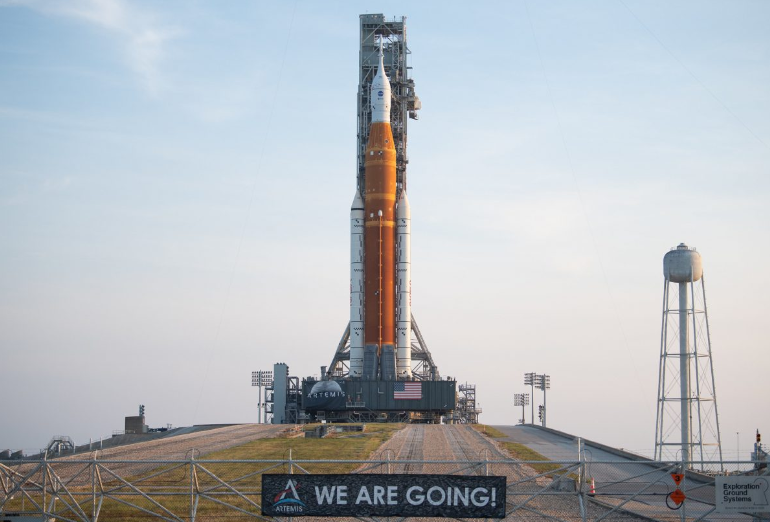
CAPE CANAVERAL—NASA and its large and diverse contractor team are eager for the success of the Artemis I test flight, seeing the uncrewed mission as an opportunity to learn from a lengthy and challenging development effort in order to continue advancing the technology and cutting costs.
“We want this to be a 30-year continuous program,” Jim Free, NASA’s Exploration Systems Development Mission Directorate associate administrator, told an Aug. 26 prelaunch news briefing. “Absolutely we want it down,” in regard to costs.
In a 2020 audit, NASA’s inspector general estimated the agency will have invested more than $40 billion in the Artemis program’s two major elements, the Space Launch System (SLS) rocket and Orion crew capsule, when it is to launch with astronauts for the first time. The Artemis II mission is currently planned for 2024.
Artemis I is targeted for launch from NASA’s Kennedy Space Center on Aug. 29 at 8:33 a.m. EDT, the opening of a 2-hr. launch period, with backup opportunities on Sept. 3 and 5. The planned 42-day mission will propel Orion around the Moon and back to Earth for a parachute-assisted Pacific Ocean splashdown and recovery. The mission’s focus is to provide a performance assessment of the SLS, the more expensive of the two major elements, as well as the reliability of the crew capsule’s life support elements and the robustness of the heat shield.
With a favorable outcome, Artemis II will provide follow-on assessments with a crew of four astronauts that will also track around the Moon and return to Earth for a splashdown and recovery. Artemis III is to follow in 2025, introducing a commercial Human Landing System (HLS) to place two astronauts at the unexplored lunar south pole for a stay of several days.
So far, more than 3,000 companies have contributed. The team includes major contractors Boeing, Aerojet Rocketdyne and Northrop Grumman for the SLS; Lockheed Martin for Orion; and Jacobs for the Exploration Ground System launch support at Kennedy. The private sector total includes an estimated 700 small businesses.
“It’s really important for us to continue. We are here for the long term,” says Jennifer Boland-Masterson, Boeing’s director of operations at NASA’s Michoud Assembly Facility in New Orleans, where the primary elements of SLS and Orion are manufactured and begin to come together prior to transport to Kennedy.
As she strolls through the assembly facility daily, workers routinely offer suggestions on how to improve the design and manufacturing processes, Boland-Masterson told the news briefing.
After the first Artemis missions launch, Boeing will provide an SLS Block IB Exploration Upper Stage upgrade that will enable the heavy rocket to launch elements of the planned lunar-orbiting Gateway station as well as Orion lunar mission crews as part of the same launch. Gateway, whose first elements are to launch in late 2024, is to help establish a sustained human lunar presence and prepare NASA for human expeditions to Mars.
“We are absolutely here for the Artemis program,” Kelly DeFazio, Lockheed Martin’s director of Orion production, told the briefing. The company has a goal of reducing the capsule’s production cost by 50%, in part with advanced technologies and reuse of some components, she said.

